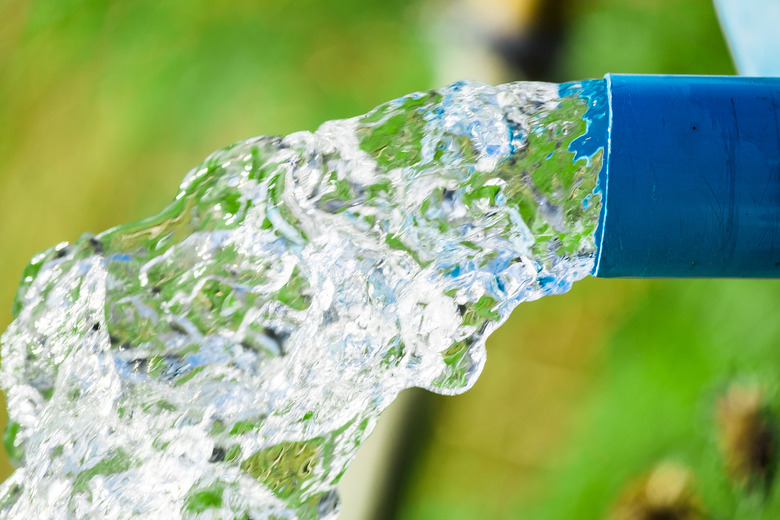How To Convert GPM To HP
Horsepower, or HP, is the amount of power required for a pump or turbine to transfer a fluid or to create a flow in the fluid. This depends on the rate the fluid is lifted and the height to which it is lifted. The rate is usually measured in gpm, which stands for gallons per minute, and the height is usually measured in feet. If a pump is pointed up into the air, it will pump fluid to a certain height, called the total head. All fluids will be pumped to the same height if the shaft is turning at the same revolutions per minute.
1. Find Your Formula
Write down the following formula:
\(Hp = \frac{Q\times H}{3,960\text{ gallons per minute per foot}\times eff}\)
where "Hp" stands for horsepower, "Q" stands for flow rate in gallons per minute, "H" stands for total head in feet, the 3,960 is a conversion factor to transfer from gallons per minute per foot to horsepower and "eff" stands for the efficiency of the hydraulic equipment being used, such as a pump or turbine.
2. Determine the Flow Rate
Determine the discharge rate or flow rate of the liquid in the system. This quantity is usually found in the hydraulic system's manual or on the system itself. An impeller meter, orifice meter, or other measurement device may be used to take this measurement as well. Flow rates must be converted to gallons per minute for use in calculating the horsepower.
3. Determine the Total Head of the Liquid
Determine the total head of the liquid in the system and convert the answer into feet. The total head a pump or turbine can produce is defined as the potential height or depth that the water level can reach; this value depends on the type and strength of pump or turbine that is used in the system. An example of calculating the total head is as follows: If a waste water column exerts a pressure, Pe, of 0.433 pounds per inch for every foot of the column and the total pressure, Pt, on a gauge in the system reads 4 psi, then the total head H can be calculated with the equation
\(H=\frac{P_t}{P_e}=\frac{4\text{ psi}}{0.433\text{ psi per ft}}=9.24\text{ ft}\)
4. Determine the Efficiency
Determine the efficiency of the pump or turbine by referring to the manual or it may be listed on the equipment. If not, contact the manufacturer for this information. The efficiency of the pump can also be determined if the ratio of the work being done by the system to the power or energy being supplied is known. Convert the efficiency percentage to a decimal when used to solve an equation. If, for example, a pump had an efficiency of 65 percent, then the decimal quantity would be 0.65.
5. Calculate Hp
Plug all the predetermined values into the equation for Hp to calculate horsepower. For example, if the system had a pump with a known efficiency of 65 percent and the pump delivers 250 gallons per minute to a total head of 72 feet, the horsepower of the system is:
\(Hp = \frac{250\times 72}{3,960\times 0.65} = 6.99\text{ horsepower}\)
TL;DR (Too Long; Didn't Read)
The typical efficiency of most hydraulic equipment runs at about 60 percent to 75 percent. One horsepower equals 3,960 gallons/minute/feet.
Cite This Article
MLA
Coswell, Angel. "How To Convert GPM To HP" sciencing.com, https://www.sciencing.com/convert-gpm-hp-6870232/. 5 December 2020.
APA
Coswell, Angel. (2020, December 5). How To Convert GPM To HP. sciencing.com. Retrieved from https://www.sciencing.com/convert-gpm-hp-6870232/
Chicago
Coswell, Angel. How To Convert GPM To HP last modified March 24, 2022. https://www.sciencing.com/convert-gpm-hp-6870232/
